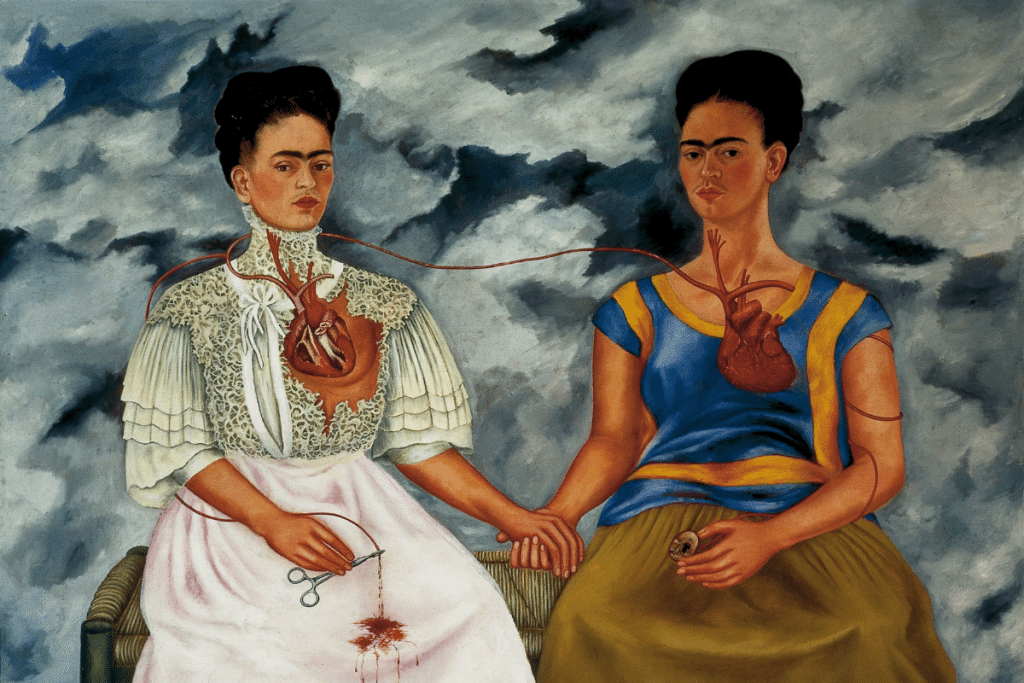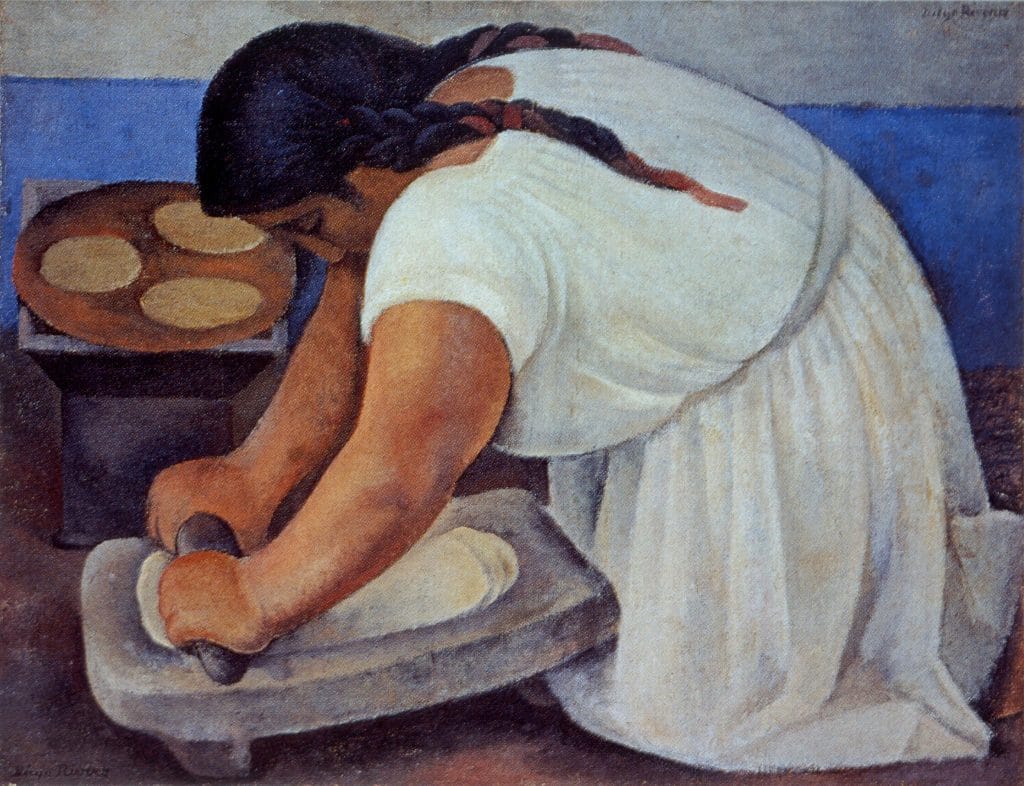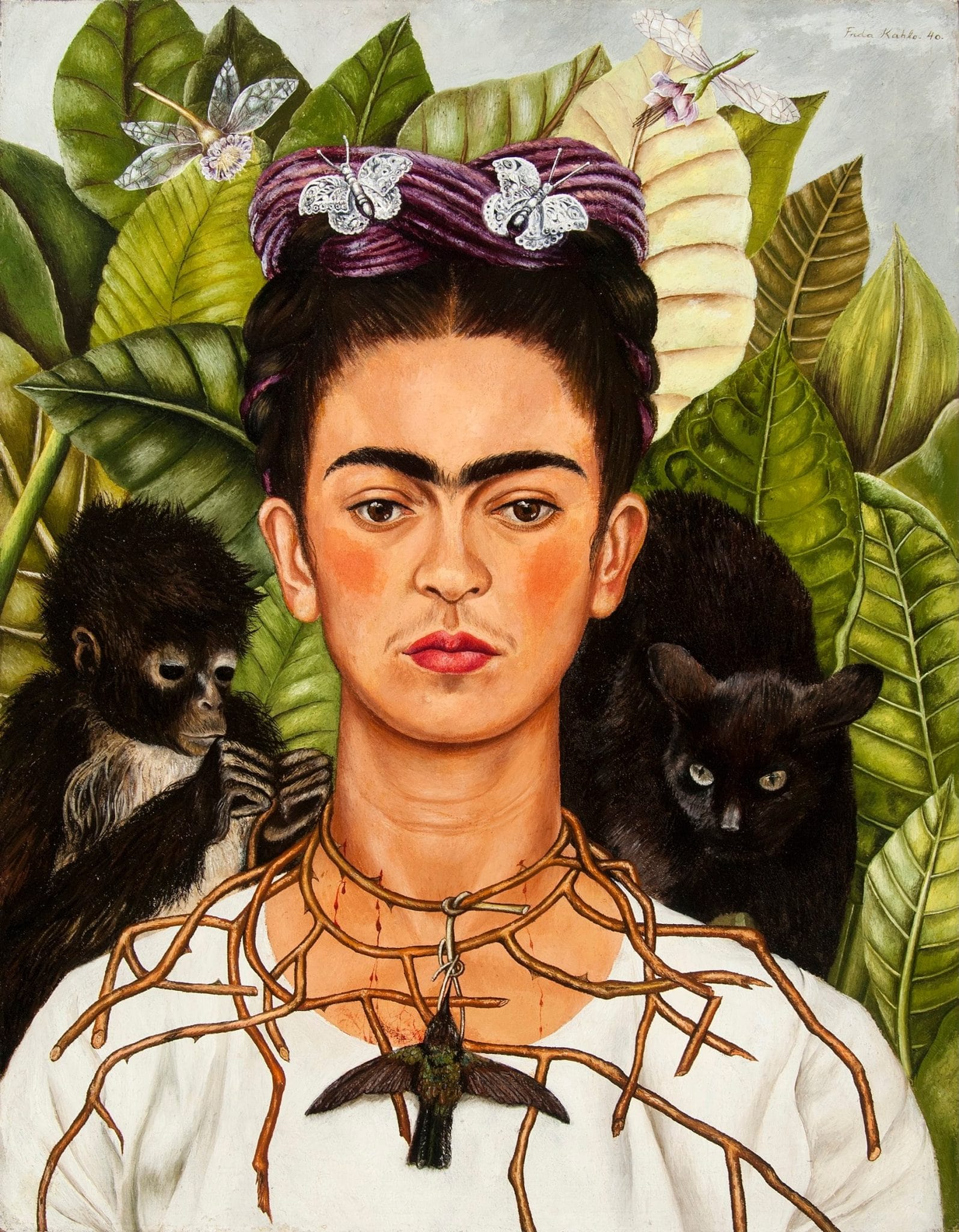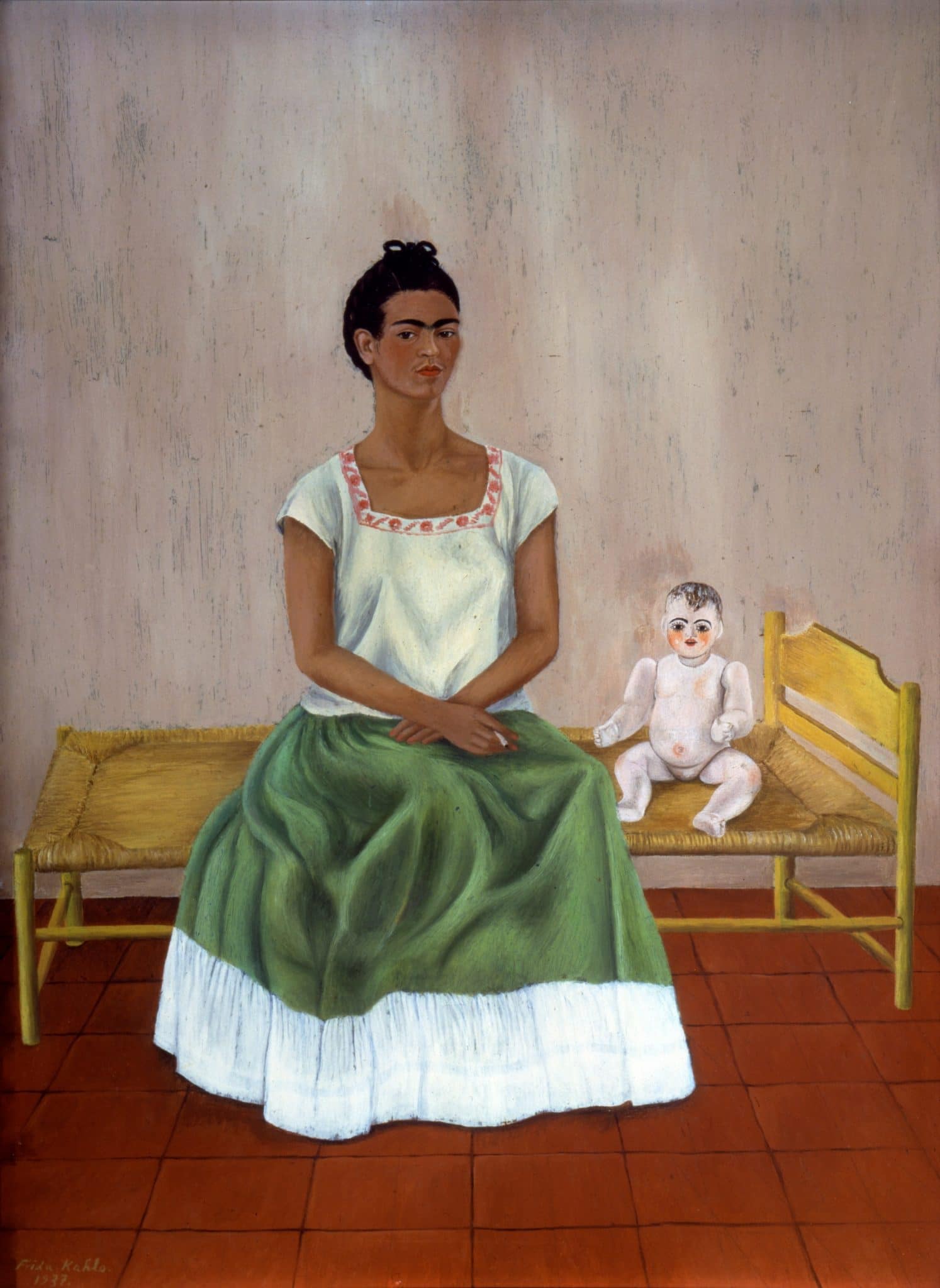
Frida and Diego’s pieces will come to life in a 360 degree spectacle
Mexican Geniuses: A Frida & Diego Immersive Experience landed in DC last summer, bringing with it an array of the couple’s most famous work. As you prepare to witness the exhibit before it departs the city on December 4, why not brush up your knowledge on Frida and Diego’s most iconic works and their significance? Here’s a list of 7 renowned art pieces from the Mexican geniuses themselves.
Don’t miss out on this vibrant immersive experience, get tickets here!
1. The Two Fridas, 1939, by Frida Kahlo
Arguably Frida’s most popular piece, this painting is her largest body of work. Painted during her divorce from Diego, the piece represents the two sides of Frida — before and after the separation. On one side, we see the Frida Diego first met, while on the other, a broken Frida in the limelight of the art world. Perhaps the artist wanted to reconcile the two sides of herself by picturing them joined at the heart, in unison.
2. The Grinder, 1924, by Diego Rivera
This painting is often called The Woman Grinding Maize, as it pictures just that: the woman’s exhausted face depicts the demands of many workers, who had to work incredibly hard even when it felt like too much. Throughout his artistic career, Diego found interest in telling the stories of Mexico’s indigenous people through picturing and the ups and downs of their daily lives. This piece gives us an insight into what life may have been for them at the time.
3. Self-Portrait with Thorn Necklace and Hummingbird, 1940, by Frida Kahlo
It’s no surprise to see yet another self portrait from Frida, this time picturing the artist in traditional Mexican adornment. The thorn necklace in this painting is reminiscent of the pain she experienced after Diego and her separated. A dead hummingbird adorns the jewelry, representing good luck, while the black cat sitting on her left shoulder might indicate dark times coming to steal the joy away. Many believe the monkey to represent Diego’s indifference towards the situation Frida finds herself in, but either way, the painting feels very fragile. So many beautiful things — the butterflies, lullabies, and luscious greenery — clash with the darkness of the cat, the hummingbird, and the monkey.
4. Man Controller of the Universe, 1934, by Diego Rivera
Man Controller of the Universe is a recreation of a mural, Man at the Crossroads, commissioned by John D. Rockerfeller Jr. The original fresco was destroyed, and Diego found inspiration in it to create the mural we now know. Man Controller of the Universe demonstrates the uncertainty of our world as it becomes tainted with socio-political issues. Through the piece, Diego depicts his hopeful vision of the future, where people from all walks of life could come together in harmony.
5. Me and My Doll, 1937, by Frida Kahlo
After her car accident, Frida was left with many physical ailments, including reproductive issues. This painting comes after the three miscarriages she experienced, perhaps depicting the void she must have felt. Her room is empty, and there’s a cold distance between her and the doll on the bed as she looks directly at us. While Frida collected dolls and pets, nothing could replace her own child. She found painting to be therapy and expression, and we can truly attest to that through pieces like this one.
6. Self Portrait on the Borderline Between Mexico and the United States, 1932, by Frida Kahlo
In this self portrait, Frida depicts herself standing at the border, though it seems quite clear which side she’s loyal to. On the Mexico side, the sun and the moon are present and nature grows in abundance in the culturally-rich country. On the U.S. side, machines and skyscrapers dominate. Frida always wanted to live in Mexico, especially when Diego found community at the Detroit Institute of Arts and she moved there with him. From her pouty lips, cigarettes and Mexican flag in hand, we can feel she wants to be in her native land — no matter how much prosperity lies in the U.S.
7. Folkloric and Touristic Mexico, 1936, by Diego Rivera
Through this piece, Diego wished to show tourists coming to Mexico in a very caricatural fashion. A white lady stands tall above the locals, pictured as freaks and animalistic creatures. Folkloric and Touristic Mexico was an opportunity for Diego to, once again, make a socio-political statement. We see depicted the stereotypical representation of Mexico to the world, particularly the west — and it’s up to us to make sense of the rest. While the piece leaves a lot for interpretation, it’s definitely one of Diego’s most powerful paintings.
State-of-the-art technology will project over 300 paintings, giving you an up-close look at the Mexican geniuses’ iconic work. Every brushstroke transmits the beauty and emotion of Frida and Diego’s minds into a fully interactive experience.







